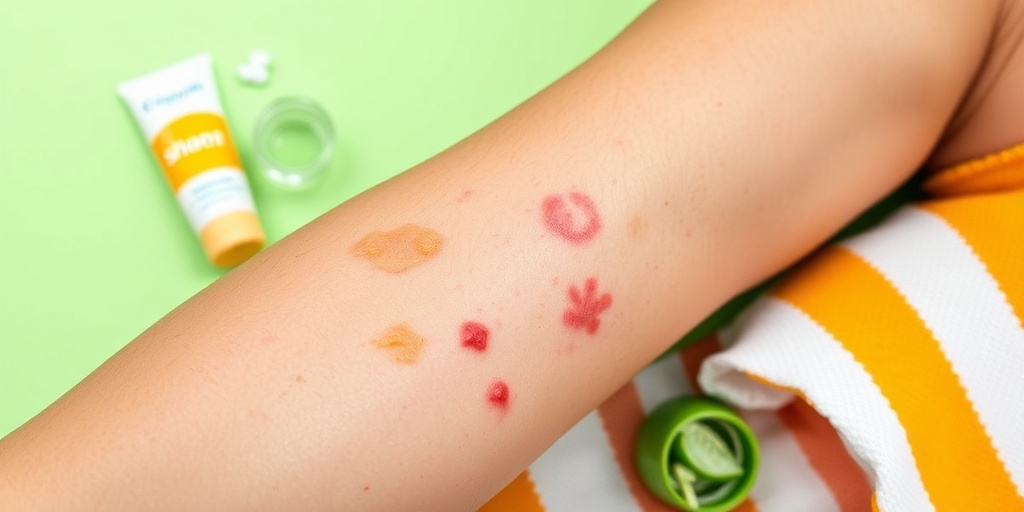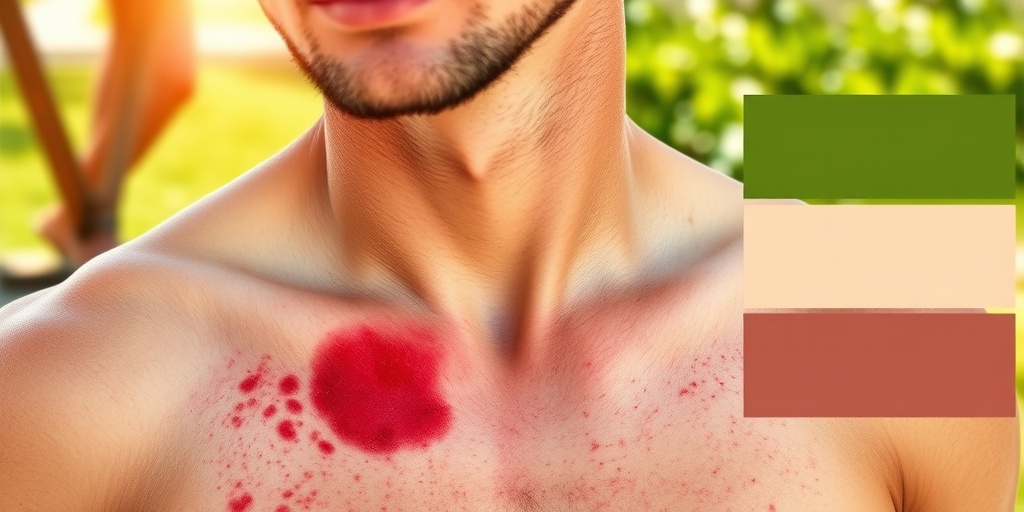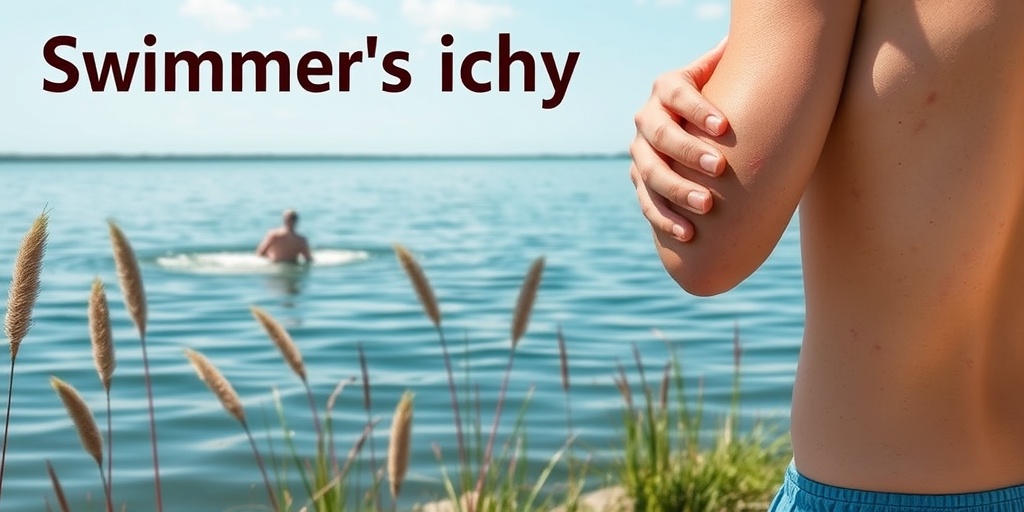What Are Summer Skin Hazards?
As the sun shines brighter and temperatures rise, our skin faces unique challenges during the summer months. Summer skin hazards refer to various skin issues that can arise due to increased sun exposure, humidity, and other environmental factors. Understanding these hazards is crucial for maintaining healthy skin and preventing long-term damage.
During summer, our skin is more susceptible to a range of problems, including sunburn, heat rash, and insect bites. These issues can not only cause discomfort but can also lead to more serious conditions if not addressed properly. Let’s explore some of the most common summer skin hazards and how to protect yourself against them.
Common Skin Issues in Summer
Summer brings a host of skin problems that can affect individuals of all ages, including children. Here are some of the most prevalent summer skin issues:
1. Sunburn
One of the most well-known summer skin hazards is sunburn. Prolonged exposure to UV rays can damage the skin, leading to redness, pain, and peeling. Sunburn not only affects your appearance but can also increase the risk of skin cancer in the long run.
- Prevention: Always apply a broad-spectrum sunscreen with at least SPF 30, even on cloudy days. Reapply every two hours, especially after swimming or sweating.
2. Heat Rash
Heat rash, also known as prickly heat, occurs when sweat gets trapped in the skin’s pores. This condition is particularly common in hot and humid weather and can cause red, itchy bumps on the skin.
- Prevention: Wear loose-fitting, breathable clothing and stay cool in shaded areas. Keeping your skin dry can also help prevent heat rash.
3. Insect Bites
Summer is synonymous with outdoor activities, but it also means increased exposure to insects. Mosquitoes, ticks, and other bugs can cause itchy bites and, in some cases, transmit diseases.
- Prevention: Use insect repellent containing DEET, wear long sleeves and pants when possible, and avoid heavily scented lotions that attract bugs.
4. Fungal Infections
The warm and humid conditions of summer can create an ideal environment for fungal infections, such as athlete’s foot and ringworm. These infections can be uncomfortable and may require medical treatment.
- Prevention: Keep your skin dry, especially in areas prone to moisture, and wear sandals in public showers or pools.
5. Allergic Reactions
Summer activities often expose us to various allergens, including pollen, certain plants, and even sunscreen ingredients. Allergic reactions can manifest as rashes, hives, or other skin irritations.
- Prevention: Identify and avoid known allergens, and consider using hypoallergenic products to minimize the risk of reactions.
6. Photosensitivity
Some individuals may experience increased sensitivity to sunlight due to certain medications or skin conditions. This can lead to severe sunburn or rashes upon sun exposure.
- Prevention: Consult with a healthcare provider about any medications that may cause photosensitivity and take extra precautions when outdoors.
Conclusion
Being aware of summer skin hazards is essential for protecting your skin during the warmer months. By taking proactive measures, such as using sunscreen, wearing appropriate clothing, and staying hydrated, you can enjoy the summer while keeping your skin healthy and safe. If you have specific concerns or experience persistent skin issues, consider consulting a healthcare professional or visiting Yesil Health AI for evidence-based health answers.
Remember, your skin is your body’s largest organ, and taking care of it should be a priority, especially during the summer! ☀️🌊

Sunburn: Causes and Prevention
As summer approaches, many of us look forward to basking in the sun. However, with the joy of sunny days comes the risk of sunburn, a common summer skin hazard that can lead to painful consequences. Understanding the causes and prevention methods is essential for enjoying the season safely.
What Causes Sunburn?
Sunburn occurs when your skin is exposed to ultraviolet (UV) radiation from the sun for too long. The skin reacts to this damage by becoming red, inflamed, and painful. Here are some key factors that contribute to sunburn:
- UV Radiation: The sun emits two types of harmful UV rays: UVA and UVB. UVA rays penetrate deeply and can cause long-term skin damage, while UVB rays are primarily responsible for sunburn.
- Skin Type: Individuals with fair skin, light hair, and light eyes are more susceptible to sunburn. Melanin, the pigment in your skin, provides some protection against UV rays.
- Time of Day: The sun’s rays are strongest between 10 a.m. and 4 p.m. During these hours, the risk of sunburn increases significantly.
- Altitude and Location: Higher altitudes and locations closer to the equator receive more intense UV radiation, increasing the likelihood of sunburn.
How to Prevent Sunburn
Preventing sunburn is crucial for maintaining healthy skin during the summer months. Here are some effective strategies:
- Use Sunscreen: Apply a broad-spectrum sunscreen with an SPF of at least 30, even on cloudy days. Reapply every two hours, or more often if swimming or sweating.
- Seek Shade: Whenever possible, stay in the shade, especially during peak sun hours. Use umbrellas or canopies for added protection.
- Wear Protective Clothing: Long-sleeved shirts, wide-brimmed hats, and UV-blocking sunglasses can shield your skin from harmful rays.
- Stay Hydrated: Drinking plenty of water helps keep your skin hydrated and can reduce the risk of sunburn.
By taking these precautions, you can enjoy the summer sun while minimizing the risk of sunburn and its associated skin problems. 🌞
Heat Rash: Symptoms and Treatment
Another common summer skin hazard is heat rash, also known as prickly heat or miliaria. This condition occurs when sweat gets trapped in the skin’s pores, leading to discomfort and irritation. Understanding the symptoms and treatment options can help you manage this condition effectively.
Symptoms of Heat Rash
Heat rash typically appears as small, red bumps or blisters on the skin, often accompanied by itching or a prickling sensation. Common areas affected include:
- Neck
- Back
- Chest
- Groin
In some cases, heat rash can lead to more severe symptoms, such as:
- Swelling
- Redness
- Infection (if the rash is scratched and becomes open)
Treatment for Heat Rash
Fortunately, heat rash is usually mild and can be treated effectively at home. Here are some tips for managing this condition:
- Cool the Skin: Move to a cooler environment and apply a cool compress to the affected area to soothe irritation.
- Keep the Skin Dry: Wear loose-fitting, breathable clothing to allow sweat to evaporate and prevent further irritation.
- Avoid Heavy Creams: Use lightweight, non-comedogenic moisturizers to prevent clogging the pores.
- Over-the-Counter Treatments: Calamine lotion or hydrocortisone cream can help relieve itching and inflammation.
If symptoms persist or worsen, it’s essential to consult a healthcare professional for further evaluation and treatment. 🌡️

Insect Bites and Skin Reactions
As the temperature rises and we spend more time outdoors, insect bites become a common concern during the summer months. Whether you’re hiking in the woods, lounging at the beach, or enjoying a backyard barbecue, the risk of encountering pesky insects increases. Understanding the types of insect bites and their potential skin reactions can help you stay safe and enjoy your summer to the fullest.
Common Insect Bites
Several insects are notorious for their bites, each causing different reactions:
- Mosquito Bites: These are perhaps the most common summer skin problems. Mosquito bites can cause itchy, red welts and may lead to more serious diseases like West Nile virus or Zika virus.
- Bee and Wasp Stings: While not technically bites, stings from bees and wasps can cause immediate pain, swelling, and in some cases, severe allergic reactions.
- Ticks: Ticks can latch onto your skin and transmit diseases such as Lyme disease. It’s crucial to check for ticks after spending time in wooded areas.
- Ant Bites: Fire ants, in particular, can deliver painful bites that result in itchy, blistering welts.
Skin Reactions to Insect Bites
When an insect bites, your body reacts to the saliva injected into your skin. This reaction can vary from person to person:
- Localized Reactions: Most people experience redness, swelling, and itching at the site of the bite. These symptoms usually resolve within a few hours to a few days.
- Allergic Reactions: Some individuals may have more severe reactions, including hives, difficulty breathing, or swelling of the face and throat. This requires immediate medical attention.
- Infection: Scratching the bite can lead to skin infections, characterized by increased redness, warmth, and pus.
Prevention and Treatment
To minimize the risk of insect bites and their associated skin reactions, consider the following tips:
- Use Insect Repellent: Apply a repellent containing DEET or picaridin before heading outdoors.
- Wear Protective Clothing: Long sleeves and pants can help shield your skin from bites.
- Keep Food Covered: When eating outdoors, keep food covered to avoid attracting insects.
- Seek Medical Attention: If you experience severe reactions or signs of infection, consult a healthcare professional.
Swimmer’s Itch: What to Know
Another summer skin hazard that many people may not be aware of is swimmer’s itch, also known as cercarial dermatitis. This condition occurs when tiny parasites, often found in freshwater lakes and ponds, penetrate the skin, leading to an itchy rash.
What Causes Swimmer’s Itch?
Swimmer’s itch is caused by the larvae of certain parasites that typically infect birds and mammals. When these larvae come into contact with human skin, they can cause an allergic reaction. Here’s what you need to know:
- Common Locations: Swimmer’s itch is most prevalent in shallow, warm waters where birds frequent.
- Timing: The risk is highest during the summer months when people are swimming and wading in these waters.
Symptoms of Swimmer’s Itch
The symptoms of swimmer’s itch can appear within minutes to days after exposure and may include:
- Itchy Rash: The most common symptom is an itchy rash that can appear as red bumps or blisters.
- Location: The rash typically appears on areas of the skin that were exposed to the water, such as the arms, legs, and torso.
Prevention and Treatment
To avoid swimmer’s itch, consider these preventive measures:
- Avoid Shallow Waters: Stay away from areas where birds are present, especially in shallow waters.
- Shower After Swimming: Rinse off immediately after swimming to remove any larvae that may be on your skin.
- Use Anti-itch Creams: Over-the-counter hydrocortisone creams or antihistamines can help alleviate itching.
By being aware of these summer skin hazards, you can take proactive steps to protect your skin and enjoy the sunny season without worry! ☀️

Skin Care Tips for Summer
As the sun shines brighter and temperatures rise, it’s essential to pay extra attention to your skin. Summer skin hazards can lead to various issues, from sunburn to dehydration. Here are some effective skin care tips to keep your skin healthy and glowing during the warmer months.
1. Stay Hydrated
One of the most crucial aspects of summer skin care is hydration. The heat can lead to dehydration, which can make your skin look dull and lifeless. Aim to drink at least 8-10 glasses of water a day. You can also include hydrating foods like cucumbers, watermelon, and oranges in your diet. 🍉
2. Use Sunscreen Daily
Applying sunscreen is non-negotiable during summer. Choose a broad-spectrum sunscreen with an SPF of at least 30 and apply it generously to all exposed skin. Remember to reapply every two hours, especially if you’re swimming or sweating. This will help protect your skin from harmful UV rays and reduce the risk of sunburn and long-term skin damage. ☀️
3. Opt for Lightweight Moisturizers
In the summer, heavy creams can feel suffocating. Instead, opt for lightweight, non-comedogenic moisturizers that hydrate without clogging your pores. Look for products containing ingredients like hyaluronic acid or glycerin, which can help maintain moisture levels without feeling greasy.
4. Exfoliate Regularly
Exfoliation helps remove dead skin cells, allowing your skin to breathe and absorb products better. However, be cautious not to over-exfoliate, as this can lead to irritation. Aim for gentle exfoliation 1-2 times a week using a mild scrub or chemical exfoliant.
5. Protect Your Skin from Insects
Summer often brings pesky insects that can bite and irritate your skin. Use insect repellent containing DEET or natural alternatives like citronella oil to keep bugs at bay. Additionally, wearing long sleeves and pants during peak mosquito hours can provide extra protection.
6. Be Mindful of Pool Chemicals
Chlorine and other chemicals in swimming pools can dry out your skin. After swimming, rinse off with fresh water and apply a moisturizer to replenish lost hydration. Consider using a swim cap to protect your hair and scalp from chlorine damage as well. 🏊♀️
7. Dress Appropriately
Wearing loose-fitting, breathable clothing made from natural fabrics like cotton can help keep your skin cool and reduce the risk of heat rash. Light-colored clothing also reflects sunlight, providing an additional layer of protection against the sun’s rays.
Long-Term Effects of Summer Skin Damage
While summer is a time for fun in the sun, neglecting your skin can lead to serious long-term consequences. Understanding these potential effects can motivate you to take better care of your skin during the warmer months.
1. Premature Aging
One of the most significant long-term effects of summer skin damage is premature aging. Prolonged sun exposure can lead to wrinkles, fine lines, and age spots. UV rays break down collagen and elastin in the skin, which are essential for maintaining its elasticity and firmness. Protecting your skin now can help you maintain a youthful appearance for years to come.
2. Increased Risk of Skin Cancer
Excessive sun exposure is a leading cause of skin cancer, including melanoma, basal cell carcinoma, and squamous cell carcinoma. Regularly using sunscreen and protective clothing can significantly reduce your risk. Remember, skin cancer can develop over time, so taking precautions today is crucial for your long-term health. 🛡️
3. Hyperpigmentation
Summer skin hazards can also lead to hyperpigmentation, where certain areas of the skin become darker than the surrounding skin. This condition can be triggered by sun exposure and can be challenging to treat. Using sunscreen and avoiding peak sun hours can help prevent this issue.
4. Dehydration and Skin Conditions
Chronic dehydration can lead to various skin conditions, such as eczema and psoriasis. The heat and humidity of summer can exacerbate these issues, making it essential to keep your skin hydrated and moisturized. If you notice persistent dryness or irritation, consult a dermatologist for tailored advice.
5. Changes in Skin Texture
Over time, neglecting summer skin care can lead to changes in skin texture, making it feel rough or uneven. Regular exfoliation and moisturizing can help maintain a smooth texture, but it’s essential to be consistent with your routine.
By following these skin care tips and being aware of the long-term effects of summer skin damage, you can enjoy the sunny season while keeping your skin healthy and radiant. 🌞

Frequently Asked Questions about Summer Skin Hazards
What are the most common summer skin problems?
During the summer months, various skin issues can arise due to increased sun exposure and heat. Some of the most common summer skin problems include:
- Sunburn
- Heat rash
- Skin allergies
- Insect bites
- Exacerbation of existing skin conditions
How can I protect my child’s skin during summer?
Protecting your child’s skin from summer skin hazards is crucial. Here are some tips:
- Apply a broad-spectrum sunscreen with at least SPF 30.
- Dress them in lightweight, long-sleeved clothing.
- Encourage them to wear hats and sunglasses.
- Keep them hydrated to prevent overheating.
What safety measures should I take during extreme summer heat?
When facing extreme summer heat, it’s essential to take precautions to avoid heat-related illnesses. Consider the following safety measures:
- Stay indoors during peak sun hours (10 AM to 4 PM).
- Drink plenty of water to stay hydrated.
- Wear light-colored, loose-fitting clothing.
- Use fans or air conditioning to cool down.
What diseases can be caused by summer conditions?
Summer can bring about various health issues, including:
- Skin infections due to heat and humidity
- Foodborne illnesses from improper food storage
- Vector-borne diseases from insect bites
Being aware of these potential diseases caused in summer season can help you take preventive measures.
How can I treat sunburn effectively?
If you or your child suffers from sunburn, consider these treatment options:
- Apply aloe vera or a soothing lotion to the affected area.
- Take cool baths to relieve pain.
- Stay hydrated by drinking plenty of fluids.
- Avoid further sun exposure until the skin heals.
What are some natural remedies for summer skin issues?
Natural remedies can be effective for treating summer skin problems. Some popular options include:
- Using coconut oil for moisturizing and soothing skin.
- Applying oatmeal baths for irritation relief.
- Using tea tree oil for insect bites and minor infections.
When should I see a doctor for summer skin issues?
If you experience severe symptoms such as blistering sunburn, persistent rashes, or signs of infection, it’s important to consult a healthcare professional. Early intervention can prevent complications and ensure proper treatment.




